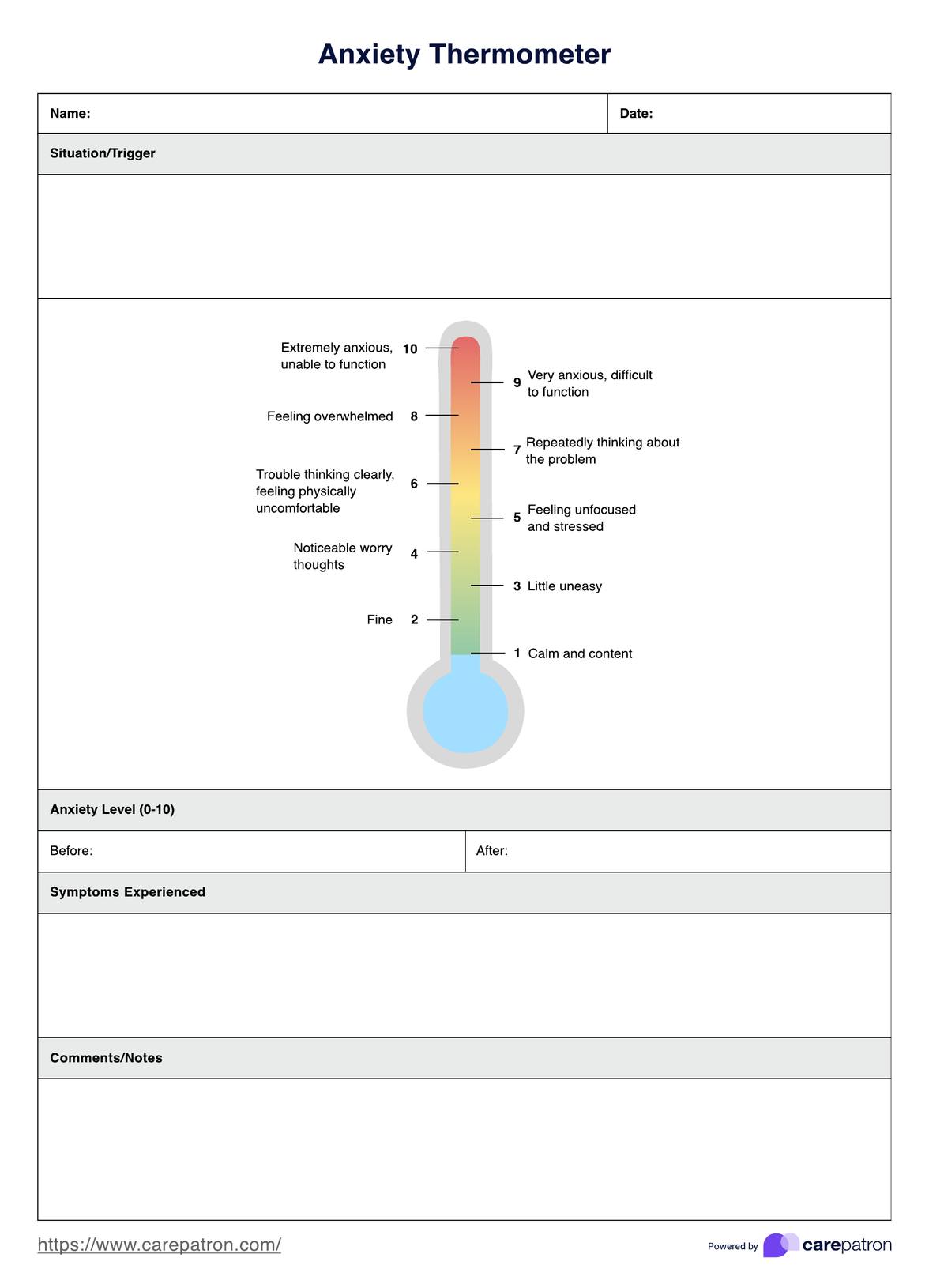Developing emotional intelligence enables better recognition, regulation, and management of emotions, reducing anxiety levels over time.

Anxiety Thermometer
Download our Anxiety Thermometer template to track anxiety levels. Ideal for young people, parents, and educators. Free PDF example included.
Use Template
Anxiety Thermometer Template
Commonly asked questions
It provides a simple, effective way to communicate with and support children dealing with anxiety, promoting better management strategies in social and educational environments.
EHR and practice management software
Get started for free
*No credit card required
Free
$0/usd
Unlimited clients
Telehealth
1GB of storage
Client portal text
Automated billing and online payments











